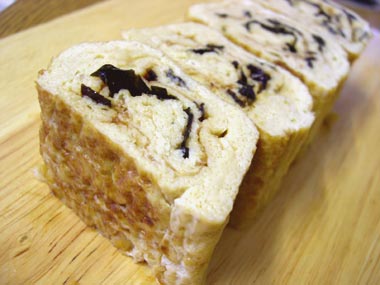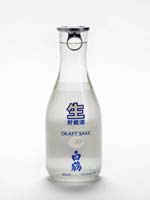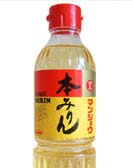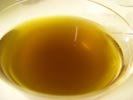 For 1 roll For 1 roll |
||
| The technique for this dish does take a little practice but I am afraid it is the only way to achieve a thick egg roll like this. Traditionally one would use a rectangular pan made
specifically for this task but I use a regular circular non stick frying pan. It just means you have to trim off the ends to get a neat roll which, as you will see in a later recipe, can be used in a nori roll. If my explaination leaves you still confused then try the internet. There are plenty of 'You tube' videos with much clearer instructions. Just search for 'Tamagoyoki'. |
||
|
Ingredients Oil for frying 3 eggs 2 teaspoons sugar 30ml (2 tbsp) dashi or 1 tbsp sake and 1 tbsp mirin 2 teaspoons soy sauce 1 sheet nori seaweed (optional) |
If you don't have any dashi prepared then use a little sake and mirin or any vegetable stock instead. 1. Place a medium sized non stick frying pan onto a medium heat and add a little oil. When the oil is hot (after about 2 minutes on the heat) drain off any excess oil. Add one third of the egg mixture and roll it around the pan as you would if you were cooking a pancake. |
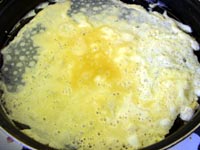 |
| 2. Wait until the egg is just cooked through, sprinkle with a little shredded nori if you are using it, and start to carefully roll it up. The Japanese would use chopsticks to do this but use whatever you would normally use to make a pancake. Make sure you release the omelette from the sides with a knife before you start to roll. | 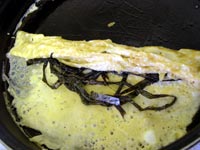 |
|
| 3. Push the roll of omelette to the furthest end of the pan way from you, add a little more oil and add one more third of the egg mix to and cook. Add more nori if you wish to. Keep cooking over a medium heat until the omelette is cooked through and roll the existing roll over the 'new' omelette so they are rolled together. | 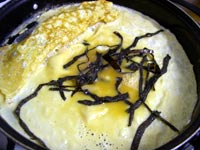 |
|
| 4. Push the roll of omelette to the furthest end of the pan way from you again and repeat the last step again adding the last of the egg. Roll up the omelette and you are done. Phew wasn't that exhausting! |  |
|
| Allow the egg roll to cool slightly and then slice it up and serve it if you want to eat it straight away. If you want to present it nicely place the slightly cooled egg roll on a sushi mat and shape it as I have done in the picture. You can make it round or square shaped in cross section. | 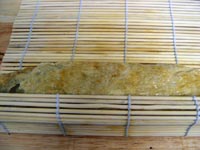 |
|

